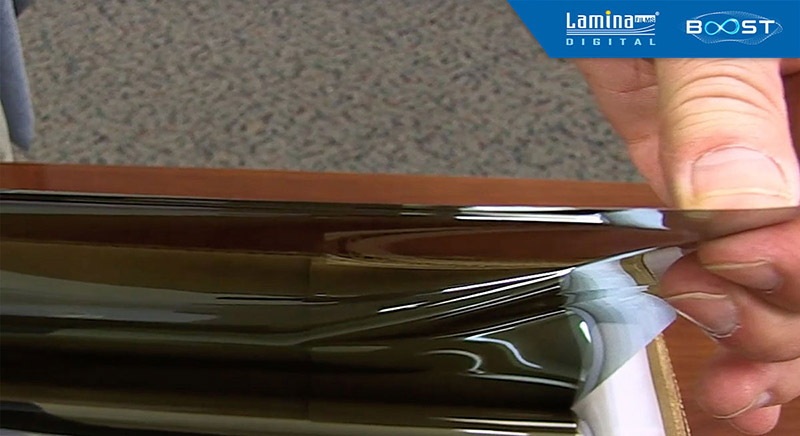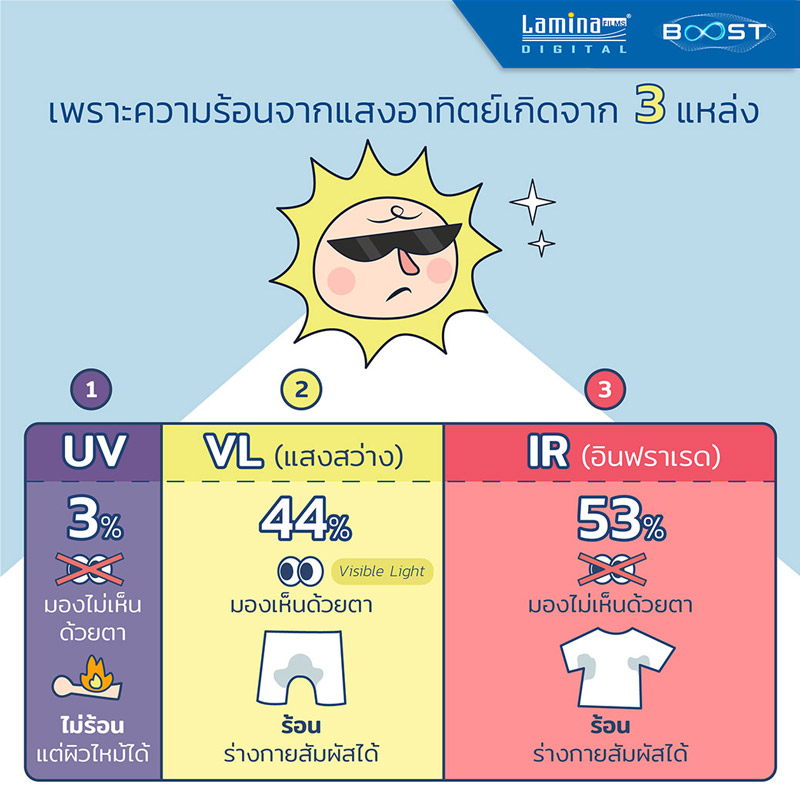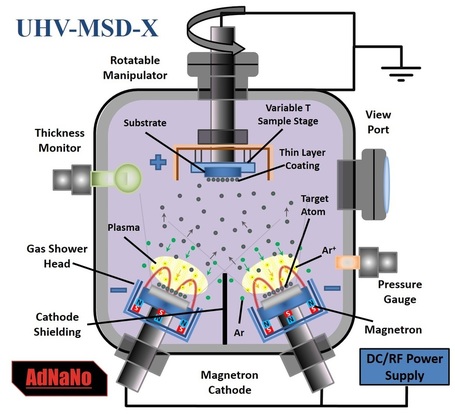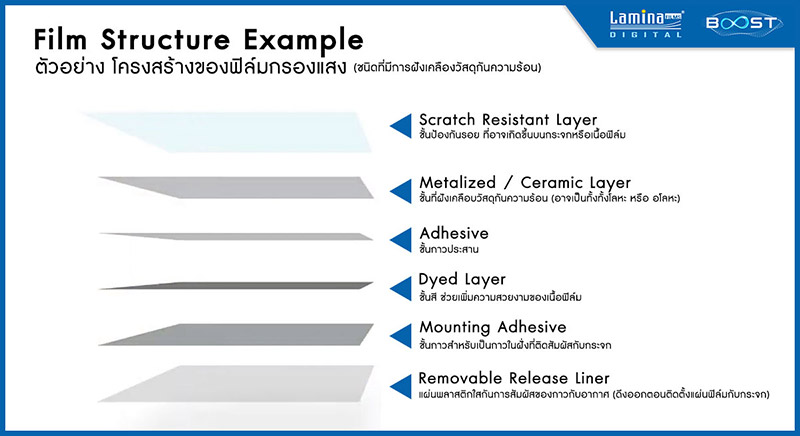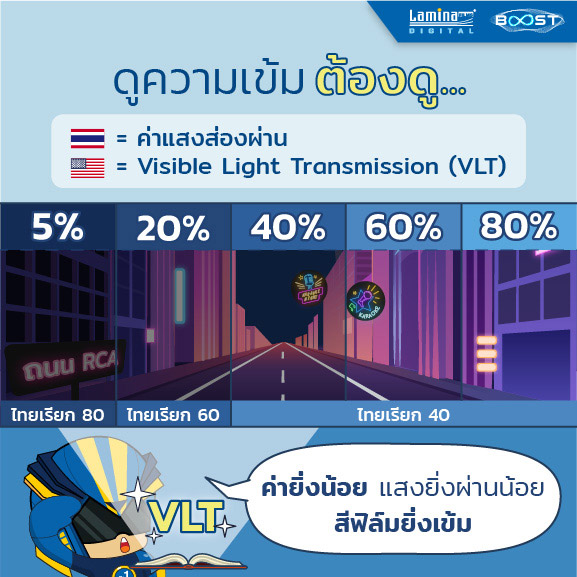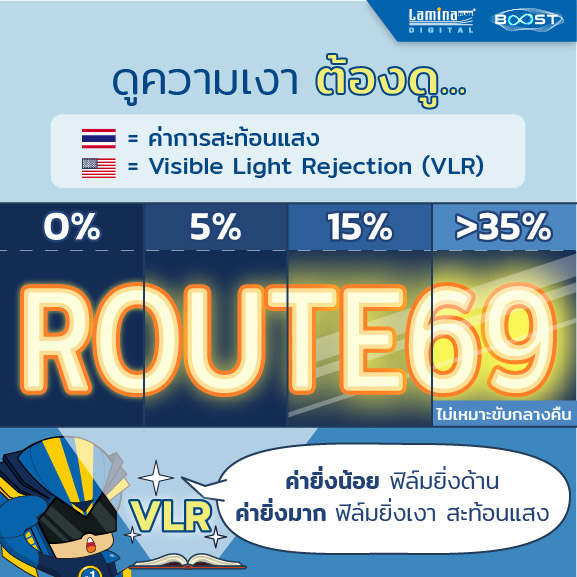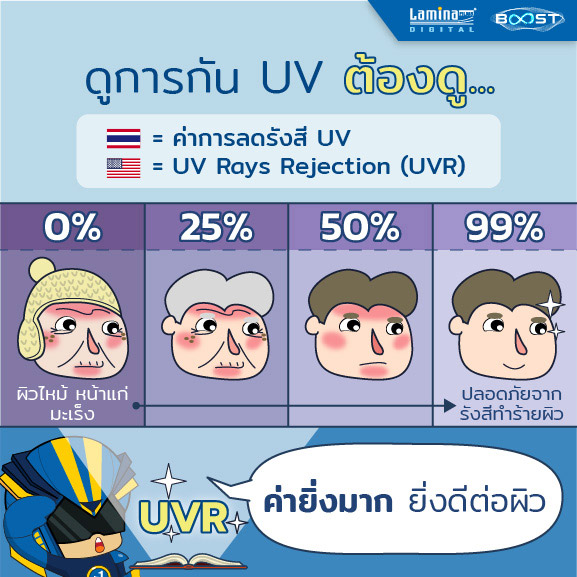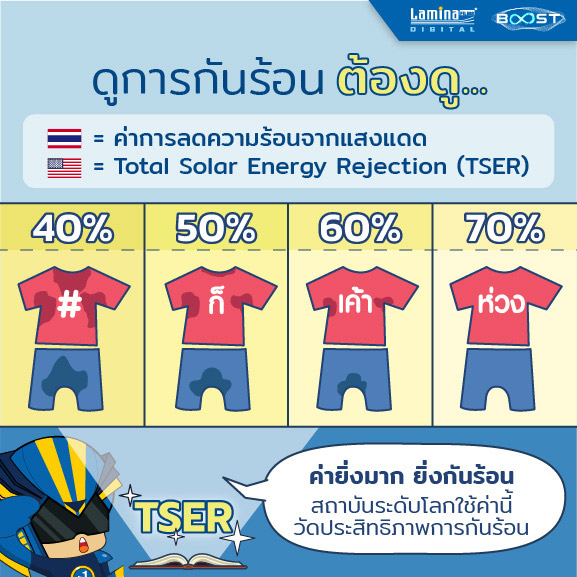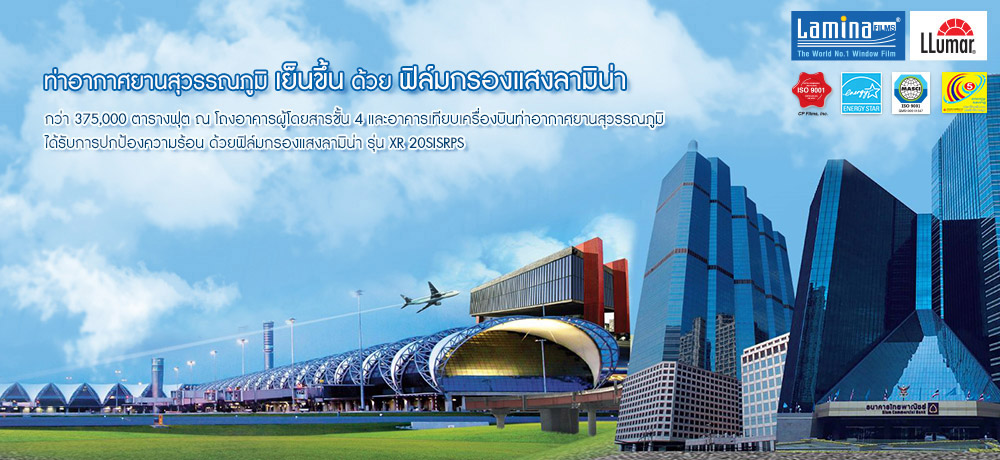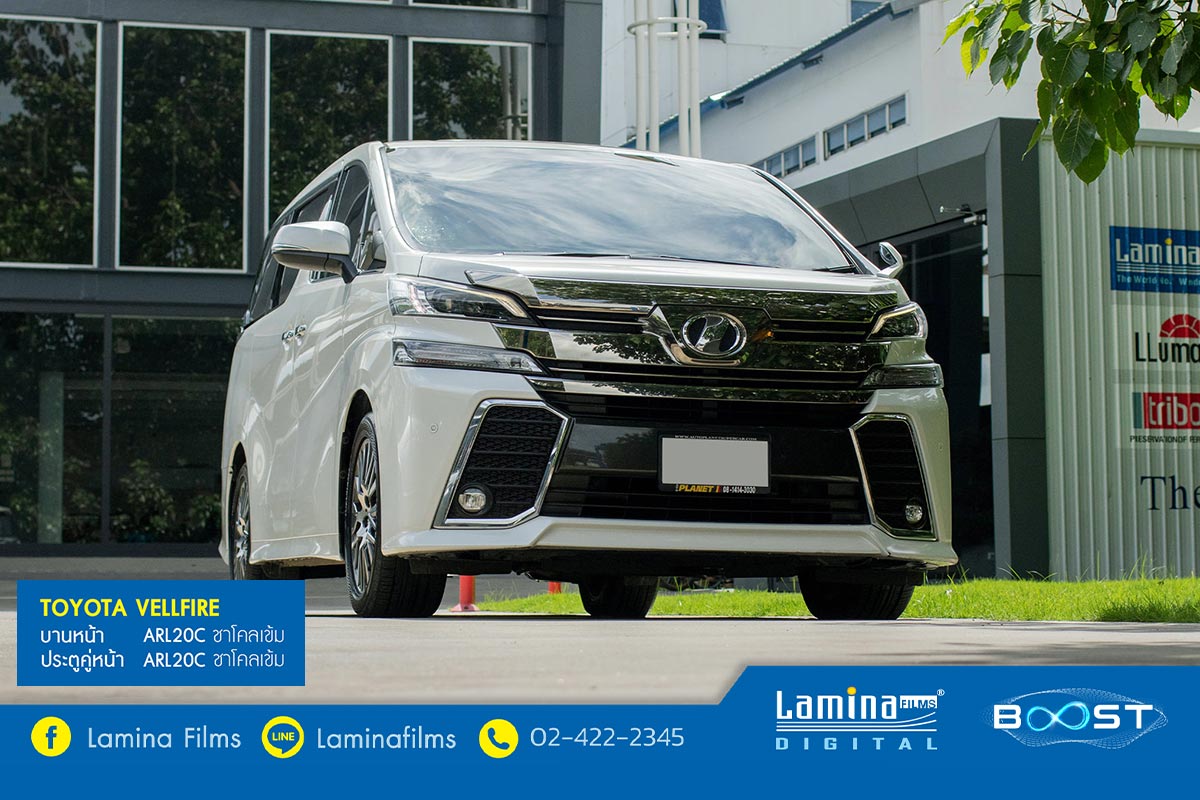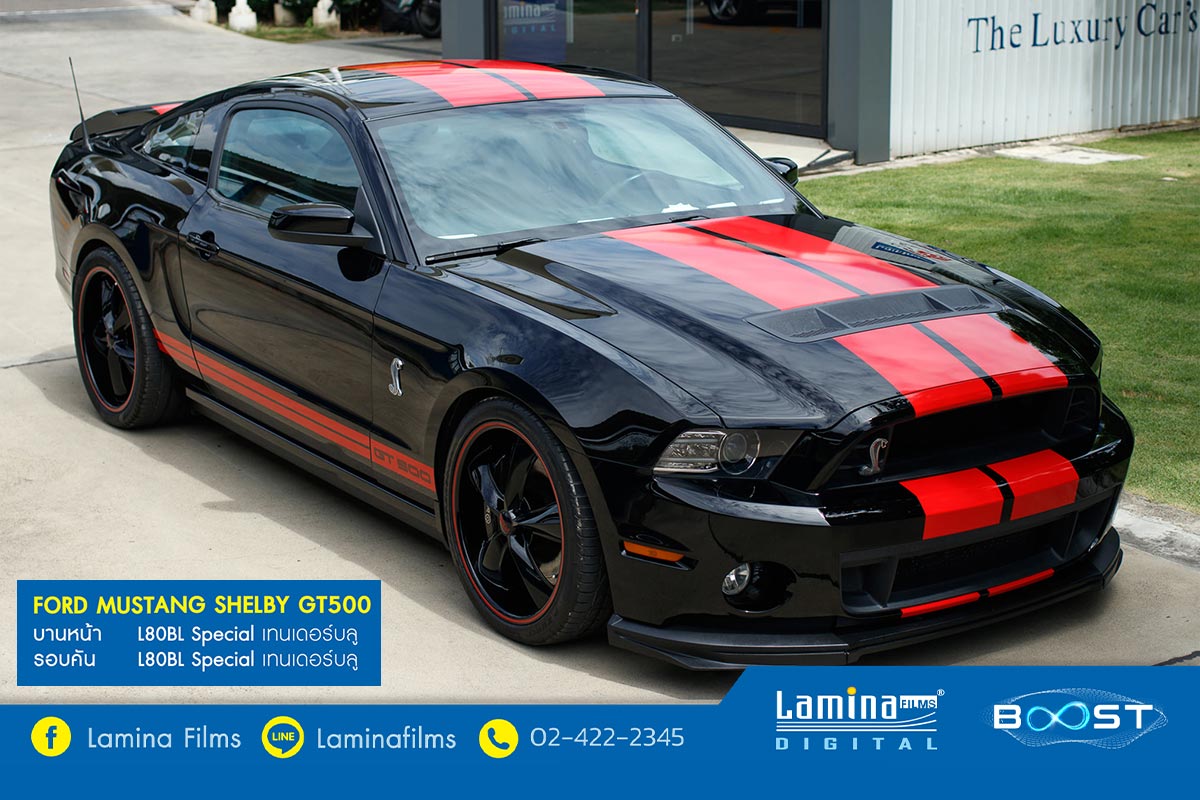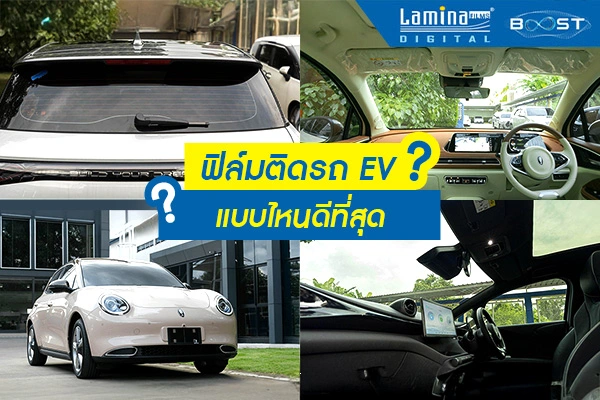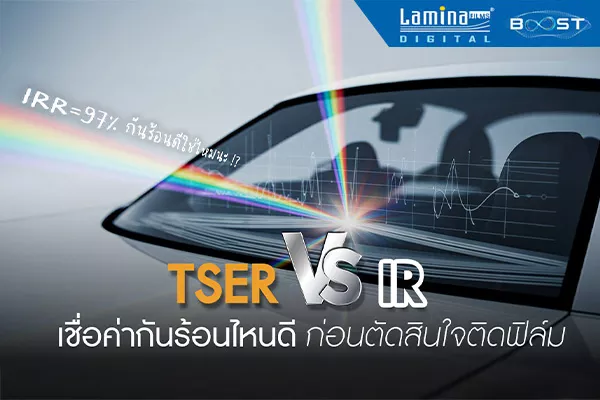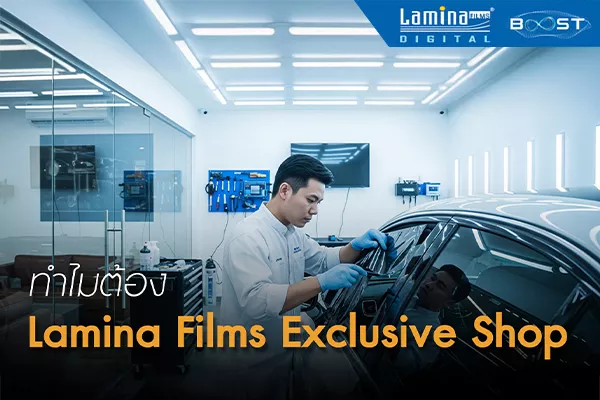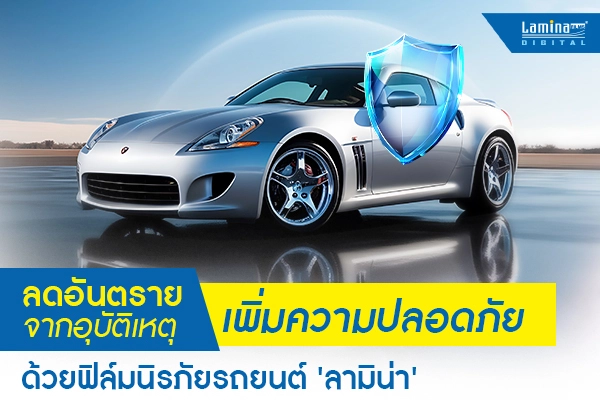Before choosing anti-glare window film you must read this article
SHARE
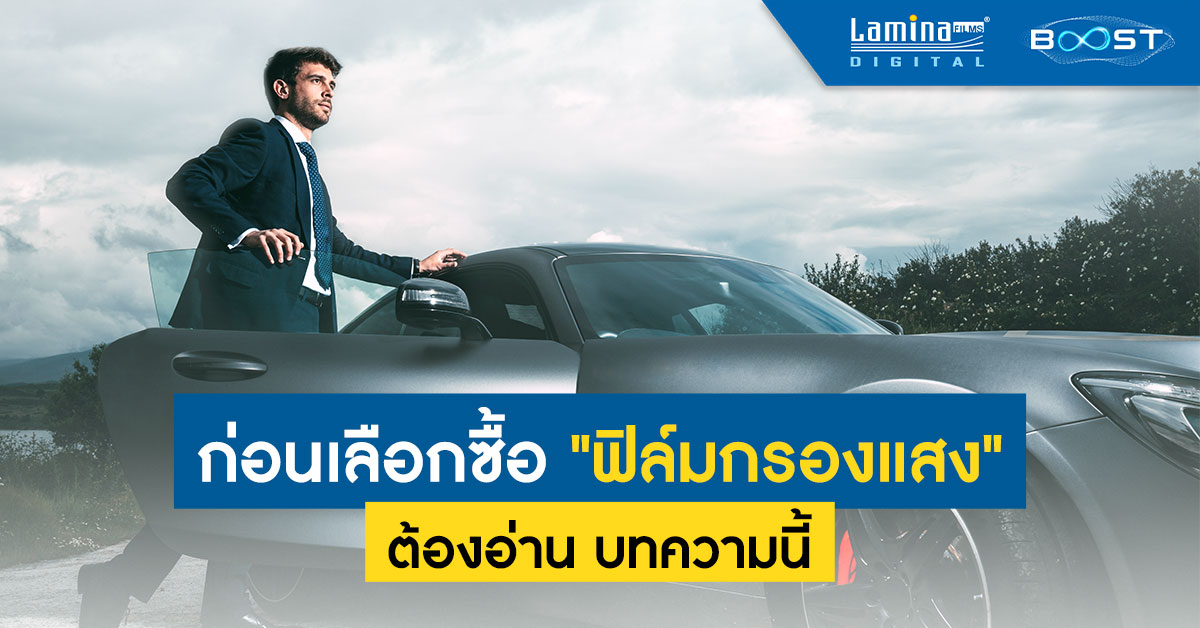
The film we see at this day has so many types with many different prices. Today, Lamina films will take you to get to know about “anti-glare window film”, whether it is what anti-glare window film is, what it is made from, advantages and types of anti-glare window film including interesting information before selecting the film, Let’s get start !
| Selecting your interested topic, just click |
What is anti-glare window film?
What is anti-glare window film?
Anti-glare window film (English name = Window Film, Window Tint) is transparent film produced from polyester plastic with features; transparent, sticky, durable, flexible but be able to keep its shape and high heat absorption. The film is adhered on the glass by clear glue so, it can be seen through without distortion. It is popular to be used as automotive window film, office building film, accommodation film etc.
ภาพแสดงตัวอย่างการดึงยืดเนื้อฟิล์ม ที่มีลักษณะใส, เหนียว และยืดหยุ่น
The advantage of anti-glare window film
The advantage of anti-glare window film
There are various advantages of anti-glare window film whether directly by its features such as:
- Glare reduction, reducing transmission light
- Heat rejection and absorption
- UV protection and still, with additional advantages from its feature such as
- Protecting eyes by mean that it help to reduce the glare and radiation inside
- Protecting your skin against UVA and UVB which are dangerous to your skin, whether irritation, sunburn, dark spots or even lead to skin cancer
- Supporting better vision on your driving reducing the risk of accident
- Reducing the risk of flying shards during the accident due to the sticky feature of polyester layer on the film surface will help to maintain the shards in place from flying to the passenger directly for more safety
- Adding privacy like using dark tint film will help the outsider cannot see the people inside the car clearly
- Protecting the quality of gadgets, tools and equipment in the house or car for example console, car cushion, front camera or equipment inside the house such as model, collections, bag, furniture or valuables which may be faded, cracked, damaged or changing its look from exposure to heat
- Protecting valuables from theft (In case, it is dark tint film or safety film) it helps to reduce the visibility of valuables interior including preventing the break-ins
- Saving electricity expense (for accommodation film) due to anti-glare window film help to reject heat, temperature, helping the air-conditioner from heavy works so it help to save some electricity expense
|
Tips :
“Solar heat” is from 3 sources
Therefore, high efficient film should has the features to protect against UV, visible light and infrared with all these 3 values come together it called “Total solar energy rejected” TSER |
How many types of anti-glare window film manufacturing?
How many types of anti-glare window film manufacturing?
As per we mentioned before “there are various types with various price range from 1,000-10,000 baht more for anti-glare window films” which the price difference comes from different quality, technology and manufacturing standard but ! how can we know that the film we select to install is a good film or not ? First, we need to know the types of each anti-glare window film. By now, we will separate them by the technology and how it is produced...so let’s start!
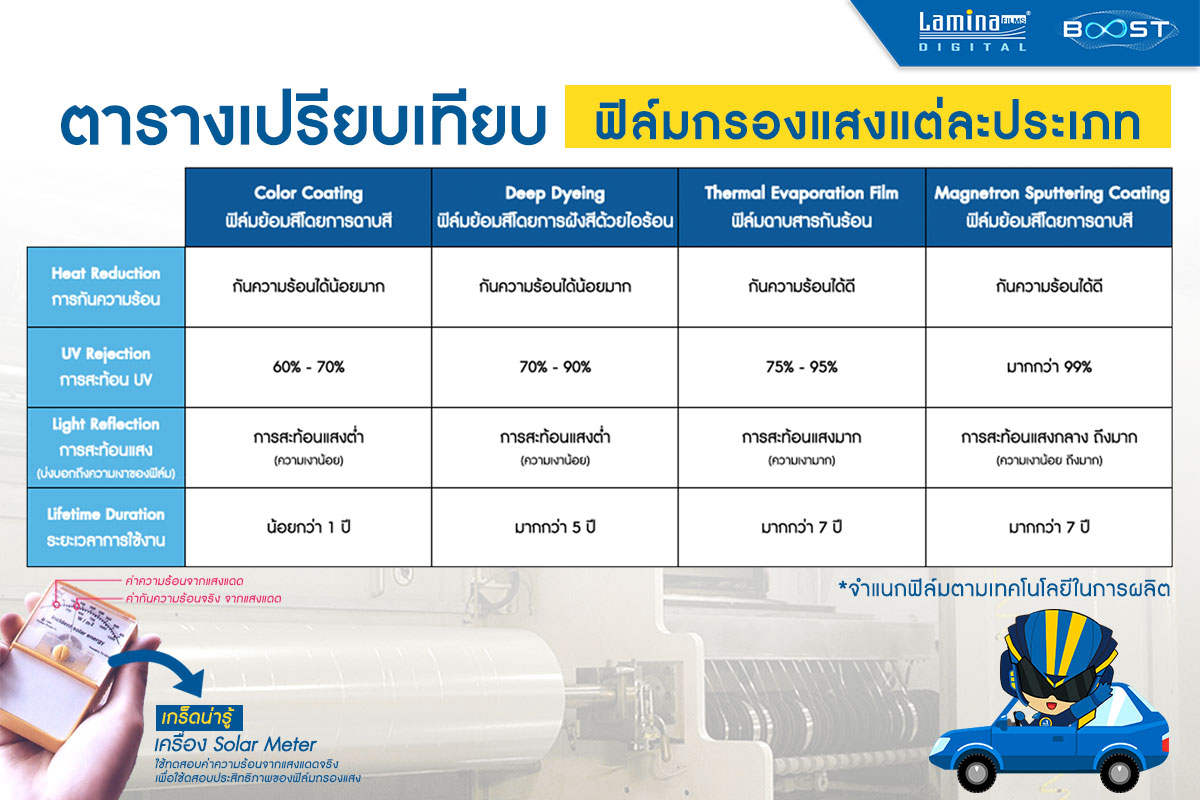

1. Color Coating Film
The type of film which use the glue to blend with the color and coat on the film surface only without coating heat rejection substance, making this type of film unable to reject heat, dark vision both in and outside and low durability (around 1 year lifetime only).
2. Deep Dyeing Film
This type of film is similar to Color Coating film but it use Deep Dyeing process to dye the color into the film layer or polyester film, making the film be more durable than color coating film but…this type of film also has no heat rejection substance therefore, it can only reduce some glare which will make it dark both in and outside, resulting to bad visibility.
3. Thermal Evaporation Film
It is a film with heat rejection substance inside the film material which can be both metal and non-metal, making it evaporate under high temperature room, while the metal changing its condition from solid to vapor stream and finally, coating the film material. This method is very popular for coating film with metal.
4. Magnetron Sputtering Coating
ภาพแสดงกระบวนการ Sputtering
ที่มา : adnano-tek.com
The use of Sputtering or propulsion of electron charge under magnetic field into heat rejection particles in atomic level so, it breaks into small nano-level particles, spreading by the push of high electrical energy. Then, these nano-particles of ceramic infuse or coat on the film surface evenly with highest purity the manufacturing technology of the anti-glare window film at present can do. Every models of Lamina anti-glare window films use this Magnetron Sputtering Coating* technology in manufacturing.
VDO shown for anti-glare window film manufacturing process
From Eastman Performance Films, LLC USA
From Eastman Performance Films, LLC USA
| Coating ≠ Dyeing
Color Coating is blending color with the glue material then coating on the film surface only while deep dyeing is to dye the color particles into the film material by using vapor so the color is smoother and more durable while supporting the features of heat rejection/UV protection. If you want to know which film color is popular nowadays, you can have further reading at the article Automotive film color
|
Structure of anti-glare window film
Structure of anti-glare window film
Anti-glare window film is not only to bring the film material to adhere with the glass only but in fact, it contained many layers such as from the example photo below which is the type of anti-glare window film with dyeing heat rejection substance in it, will be consisted of
- Scratch Resistant Layer : such as scratches which may occurred on the glass or film surface
- Metalized / Ceramic Layer : dyeing heat rejection particles layer, it can be both metal or non-metal
- Adhesive : adhered glue layer
- Dyed Layer : color layer help to add beauty of the film material
- Mounting Adhesive : Glue layer to adhere with the glass side
- Removable Release Liner : : transparent plastic to prevent the touch of glue from the air, it will be pulled off when installing the film to the window
*Example of film with heat rejection particle coating (both metal and non-metal)
| Do you know it or not!?
“Mercury tinted film” which we are familiar with the name in fact, is not made of mercury or any mercury coatings but because of its “Visible light transmission (VLT)” which has a high value thus, high reflectivity same as the mercury and high glossy so, we called it mercury tinted film.
|
Anti-glare window film value you should know before selecting one
Anti-glare window film value you should know before selecting one
For whom interest to select anti-glare window film, you may have heard about various English abbreviations whether UV, IR, VLT and so on and may be curious now what it is, whether it is important and necessary to know or not. Lamina films will help to suggest the important measurements and what you should know so, you can take in consideration when selecting anti-glare window film.
VLT = Visible Light Transmission
Is the shown % the light can transmitted to, the fewer the value means the few light can pass through which the film color will be darker
VLR = Visible Light Rejection
Is the shown % of the amount of light will be reflected from the film surface which is related to the reflection of anti-glare window film. The less number means low reflectivity of light (such as ceramic film which looked black matte) and for more number means high reflectivity such as mercury tinted film and so on.
UVR = UV Rays Rejection
This UVR value means UV radiation reduction rate. The more of this number means it can help to reduce more of UV which is more ability to protect the skin.
TSER = Total Solar Energy Rejection
This value shows total solar energy rejected (consisted of UV, Visible Light and infrared/ IR) Therefore, more value of this means those anti-glare window films can well-reject the heat, the world class institute also use this value to measure the efficiency of heat rejection.
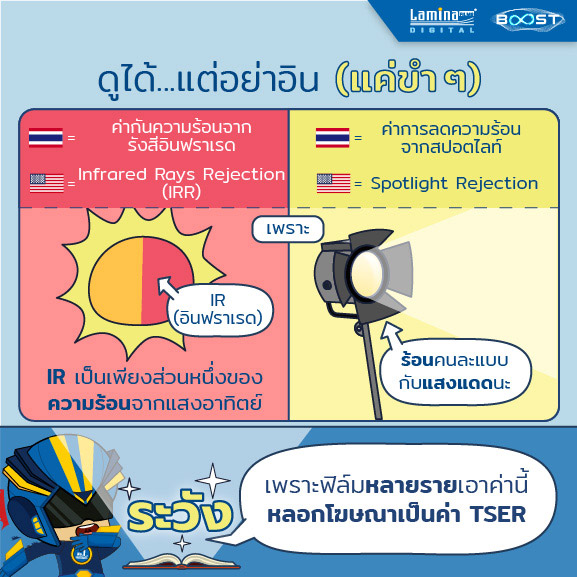 |
What is IRR and how to interpret it well?
For this IRR value (Infrared Rays Rejection) although, it is the measurement which various film company choose for advertising because the ability to test for the result of high number easily by infrared bulb (such as IRR 97% film).
Anyway, Lamina does not suggest you to decide for film installation by considering only IRR value alone due to our daily life will be faced with sunlight and IR as part of the sun heat around 53% only.
Therefore, IRR value can tell the efficiency to reject heat estimately only. For accuracy, Lamina suggests you to look at Total solar energy rejected or TSER rate every time before deciding to buy any window films.
|
Summary
You can see that there are various types of anti-glare window film not only the difference in color, material or heat rejection substance including different process of manufacturing but how do we know that…which type of film is suitable for us? Lamina suggests everyone to have a look at below checklist first:
- The film we choose is for which usage? For example, accommodation film, safety film to prevent break-ins or automotive window film because each types of film have different features.
- How is our requirement? Such as high heat rejection film, all day and night clear visibility film, film which can give you the privacy or the glossy film which can enhance the car look or the building to be more interesting and so on.
- The budget you have in order to choose the film which can fulfill your desire
If you are still not sure which types of film to choose
or still have some questions about anti-glare window film
or still have some questions about anti-glare window film
Please click below, our staffs are all ready to give you the consultation or it is also ok if you would like to see some further review photos of Lamina films’ installation. We can guarantee you that no matter which lifestyle you have, Lamina Films** have a complete ranges to succeed all of your requirements
Example of accommodation & building film installation from Lamina
Another pride of Lamina Films
to be able to install the film for Suvarnabhumi airport building
to be able to install the film for Suvarnabhumi airport building
Example of automotive window film installation from Lamina
Example of Toyota Vellfire with Lamina Digital Executive Boost Series Seriesfilm installtion
ARL20C dark charcoal both windscreen and dual window
ARL20C dark charcoal both windscreen and dual window
Example of Ford Mustang Shelby GT500 with transparent high heat rejection film
L80BL Special both windscreen and the whole car
L80BL Special both windscreen and the whole car
| Caution! Beware ceramic film scam!
Real and fake products always come together, ceramic film is also no exception thus, we want you to beware about over price ceramic film but not even a single particle of ceramic in the film material (can be coating film or normal metallized film) If you want to know 4 ways about how to distinguish between real and fake ceramic, you can have further reading at the article real ceramic film or just choose “Lamina films” you will be assured that you have installed 100% genuine ceramic film, guaranteed by 2 decades
|
*For heat rejection substances coating on the film material, at present, there are metal (such as aluminium, titanium, silver, alloy) and non-metal substances with good heat rejection ability such as ceramic, charcoal, carbon with varied unique features whether the film color, heat rejection ability or signal transmission and so on. If you want additional information, you can have a look at how many types of automotive window film?
**All Lamina films’ models are certified with ISO9001 , ASTM, IWFA, AIMCAL and ASHRAE with the warranty for the whole 7 years after installing
เว็บไซต์นี้มีการจัดเก็บคุกกี้ เพื่อมอบประสบการณ์การการใช้งานเว็บไซต์ของคุณให้ดียิ่งขึ้น รวมถึงให้เราสามารถมอบข้อเสนอ กิจกรรมส่งเสริมการขาย เลือกเนื้อหาที่เหมาะสมกับคุณอย่างเป็นส่วนตัว
ท่านสามารถศึกษา นโยบายการเก็บและใช้คุกกี้ ได้ที่ลิ้งค์นี้ ใช้งานเว็บไซต์นี้เป็นการยอมรับช้อกำหนดและยินยอมให้เราจัดเก็บคุกกี้ตามนโยบายที่แจ้งในเบื้องต้น
ยอมรับ



